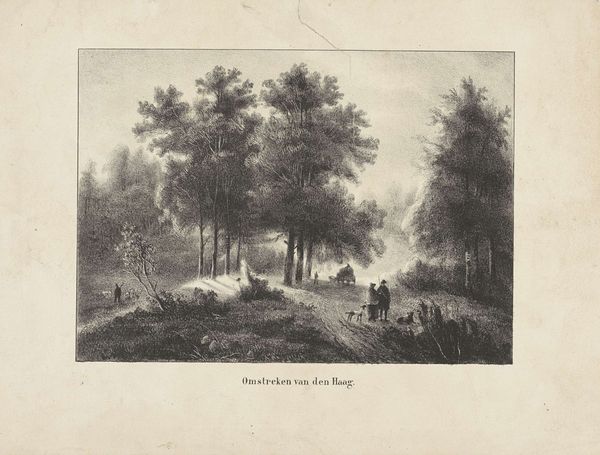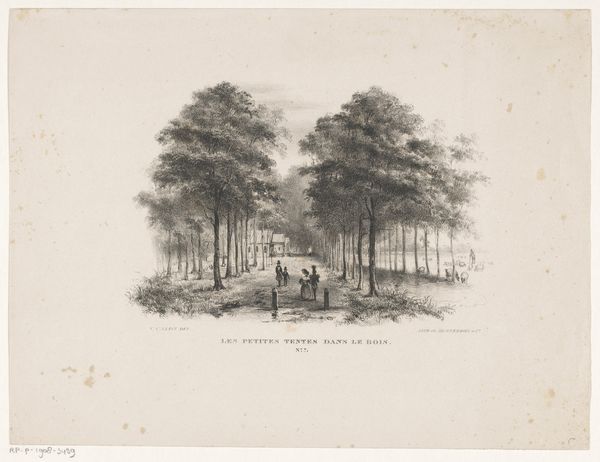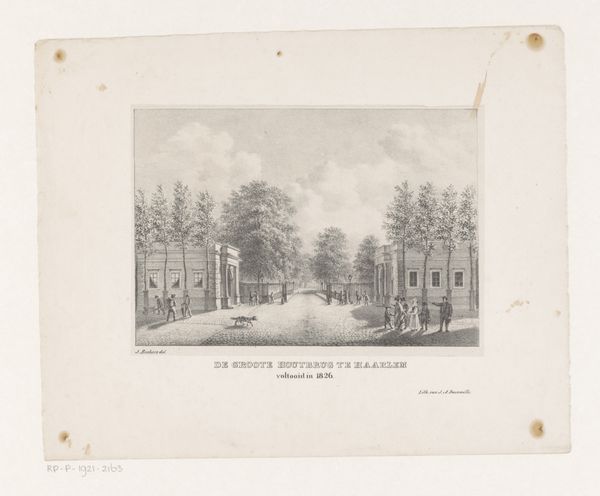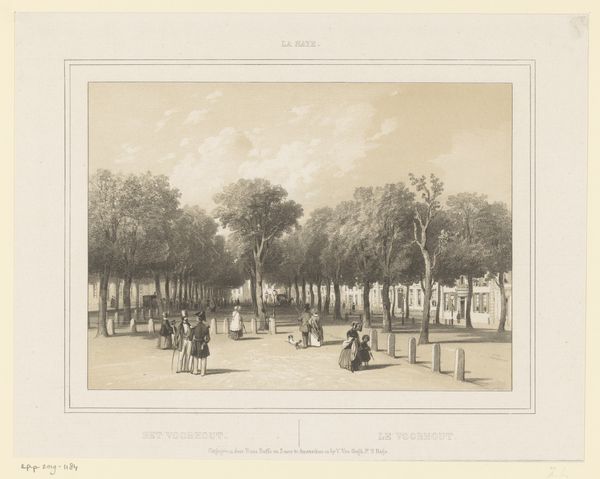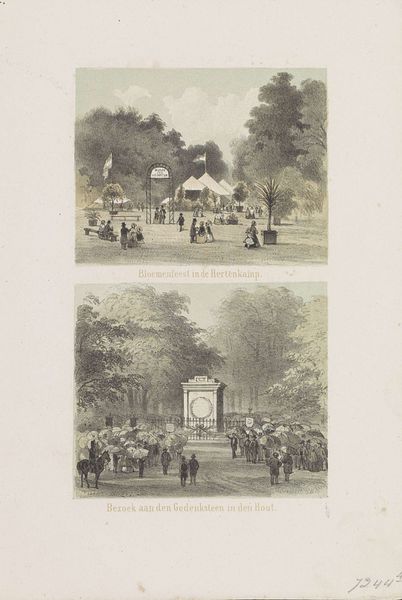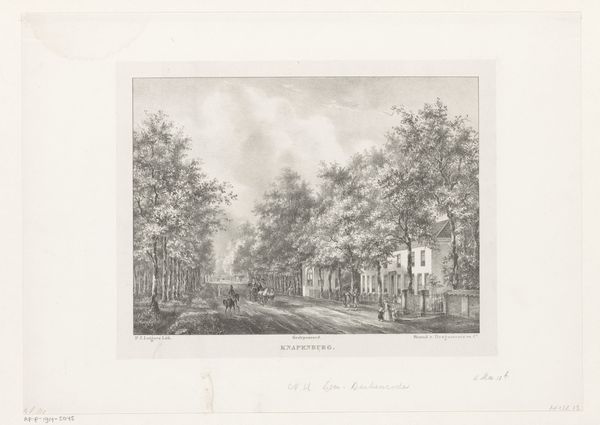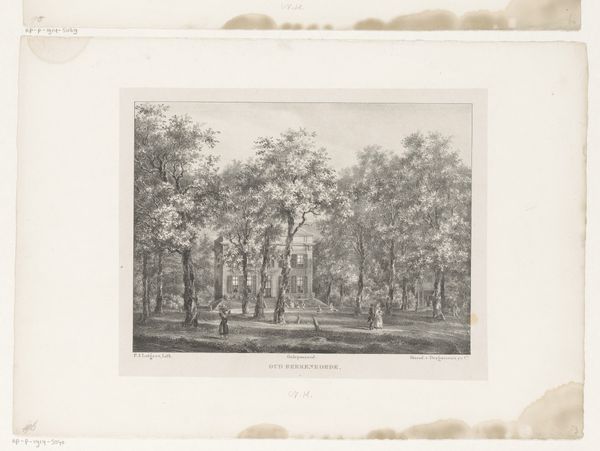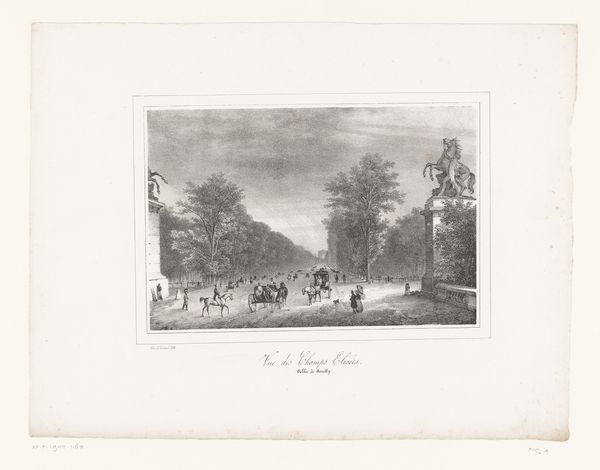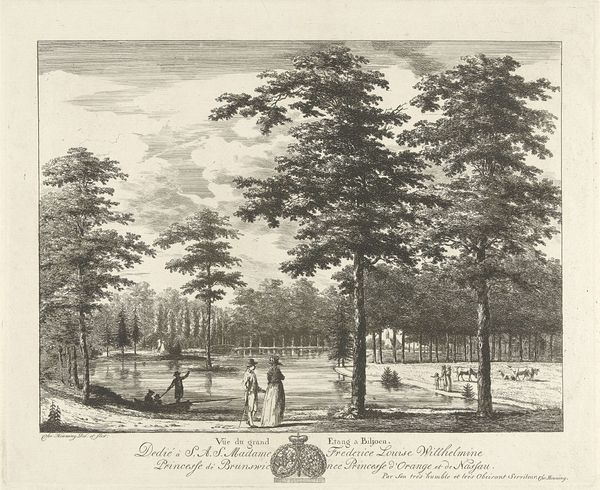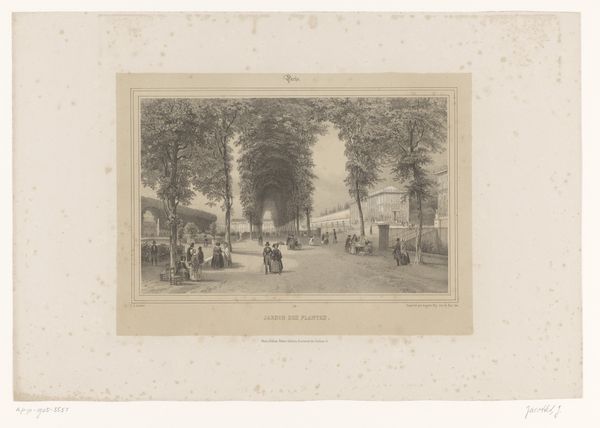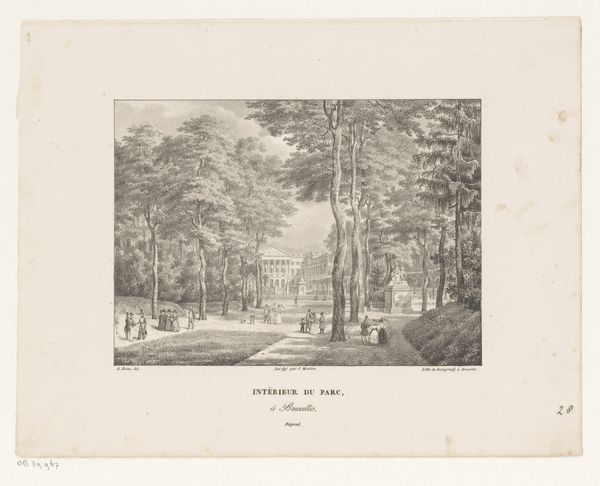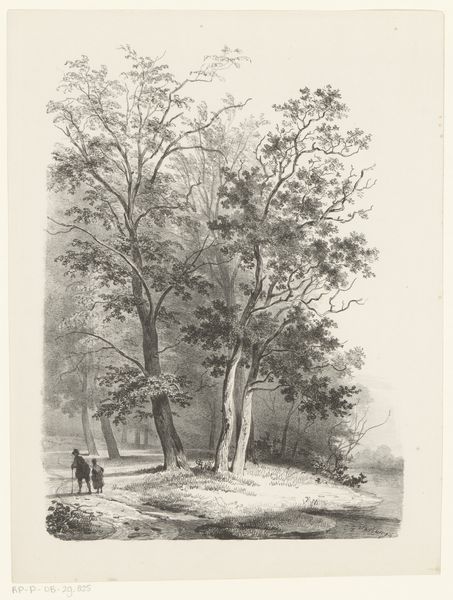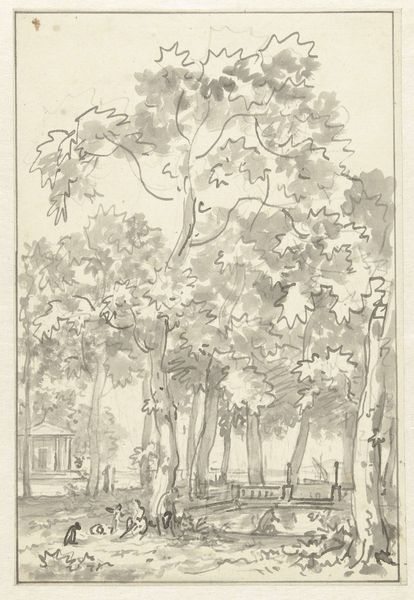
Standbeeld van Willem I, prins van Oranje, op het Plein te Den Haag 1848 - 1927
0:00
0:00
Dimensions: height 237 mm, width 324 mm
Copyright: Rijks Museum: Open Domain
Curator: Let's discuss this engraving, dating from between 1848 and 1927, which captures the statue of Willem I, Prince of Orange, in the Plein at The Hague. The print is attributed to Wilhelmus Cornelis Chimaer van Oudendorp and seems rooted in the neoclassical style. What are your first thoughts? Editor: The monumentality is striking, but there is also an unexpectedly peaceful, even casual air about it, wouldn't you agree? People milling about, children playing. It seems the artist wished to capture how power is embedded within the day-to-day activities of the citizens. Curator: Indeed. Focusing on the historical and social dimensions, one has to recognize how such monuments served—and continue to serve—as focal points for shaping collective identity. This statue functions, I believe, as a deliberate attempt at nation-building. Consider the symbolism; a leader immortalized and made perpetually present, reinforcing his legacy for generations. Editor: The very deliberate pose of Willem is essential for grasping its emotional meaning. His posture speaks of thoughtful leadership. Even his garments serve as signifiers. This iconography weaves Orange’s image into a grand historical narrative, one of defiance, liberty, and Dutch resilience. Curator: The engraving’s cityscape lends additional layers of meaning. It creates an interplay between political ideology, space, and social experience. Note how this statue is surrounded by citizens; not just men and women, but families, workers, military personnel; everyone in their everyday uniforms, captured going about the mundanities of daily existence. Editor: It does give us pause, doesn’t it, to witness the intersection between powerful symbol and everyday humanity, caught forever. In some ways, the quotidian details add another layer to the historical significance; in other ways, they diffuse that power. Curator: Precisely. Analyzing art requires a continuous negotiation between form and context, memory and the present, to enable an expanded understanding of representation and reality. Editor: Indeed. The echoes of history embedded in symbols and imagery often grant us insight to what they have always signified. And how those meanings evolve. Thank you, that was quite enriching.
Comments
No comments
Be the first to comment and join the conversation on the ultimate creative platform.

